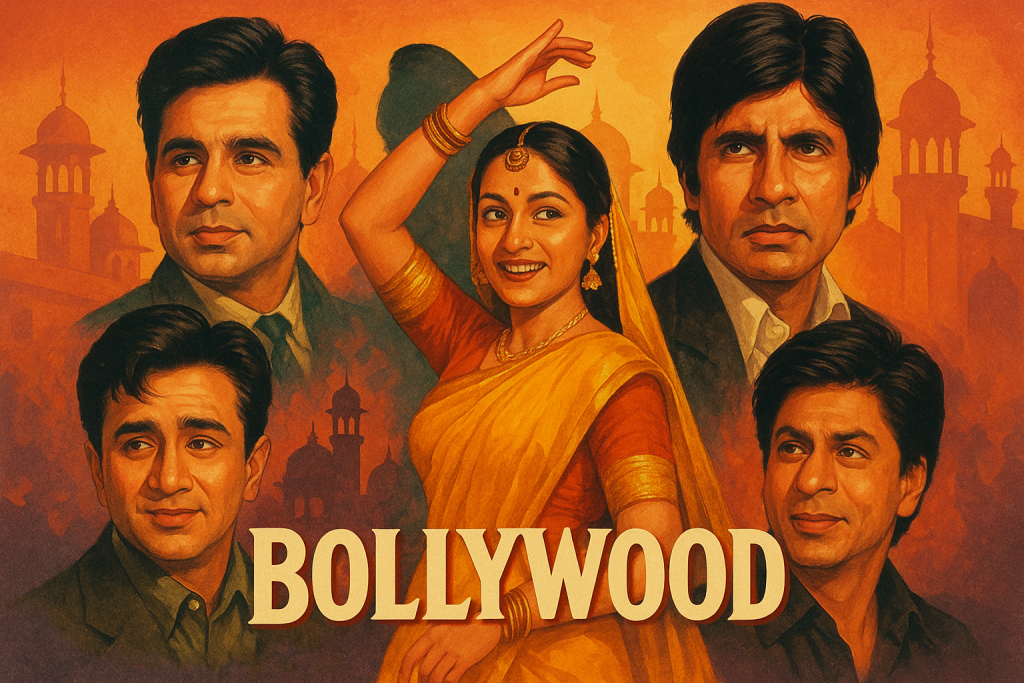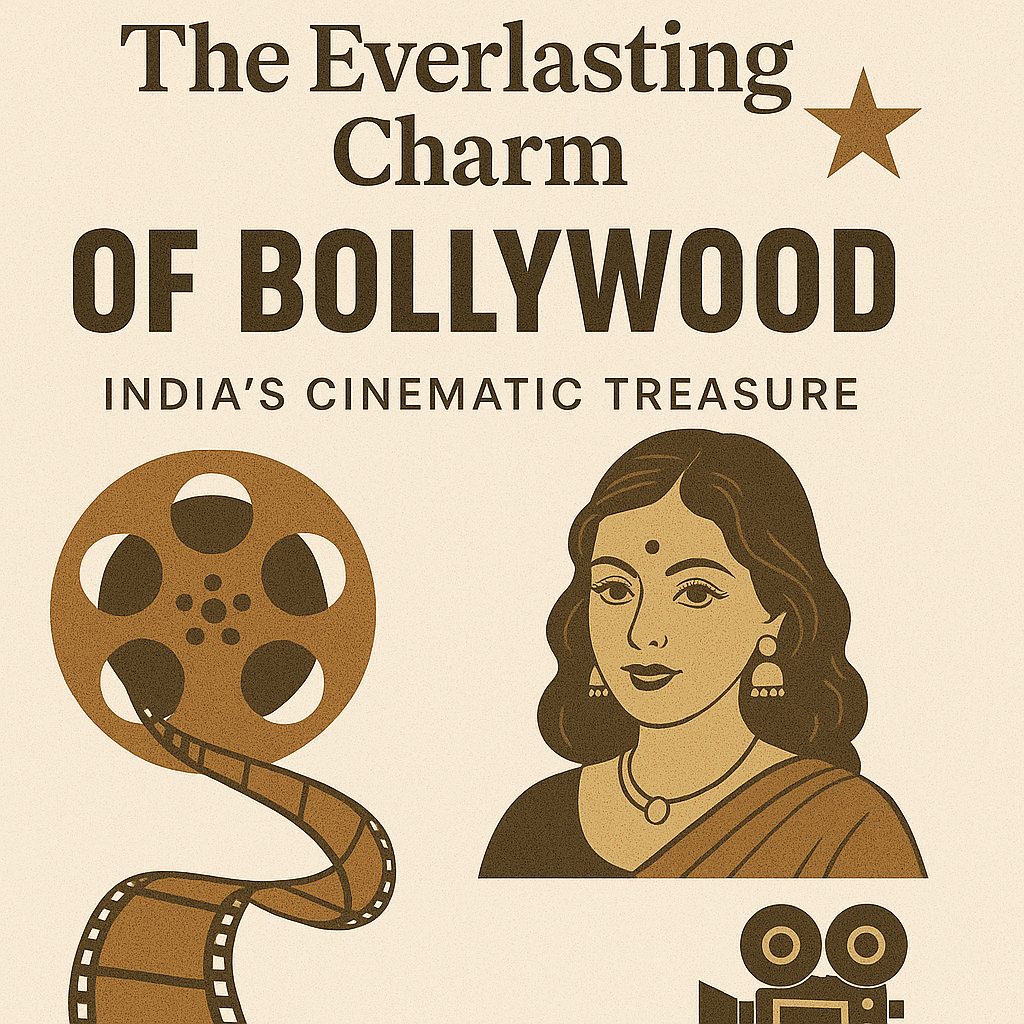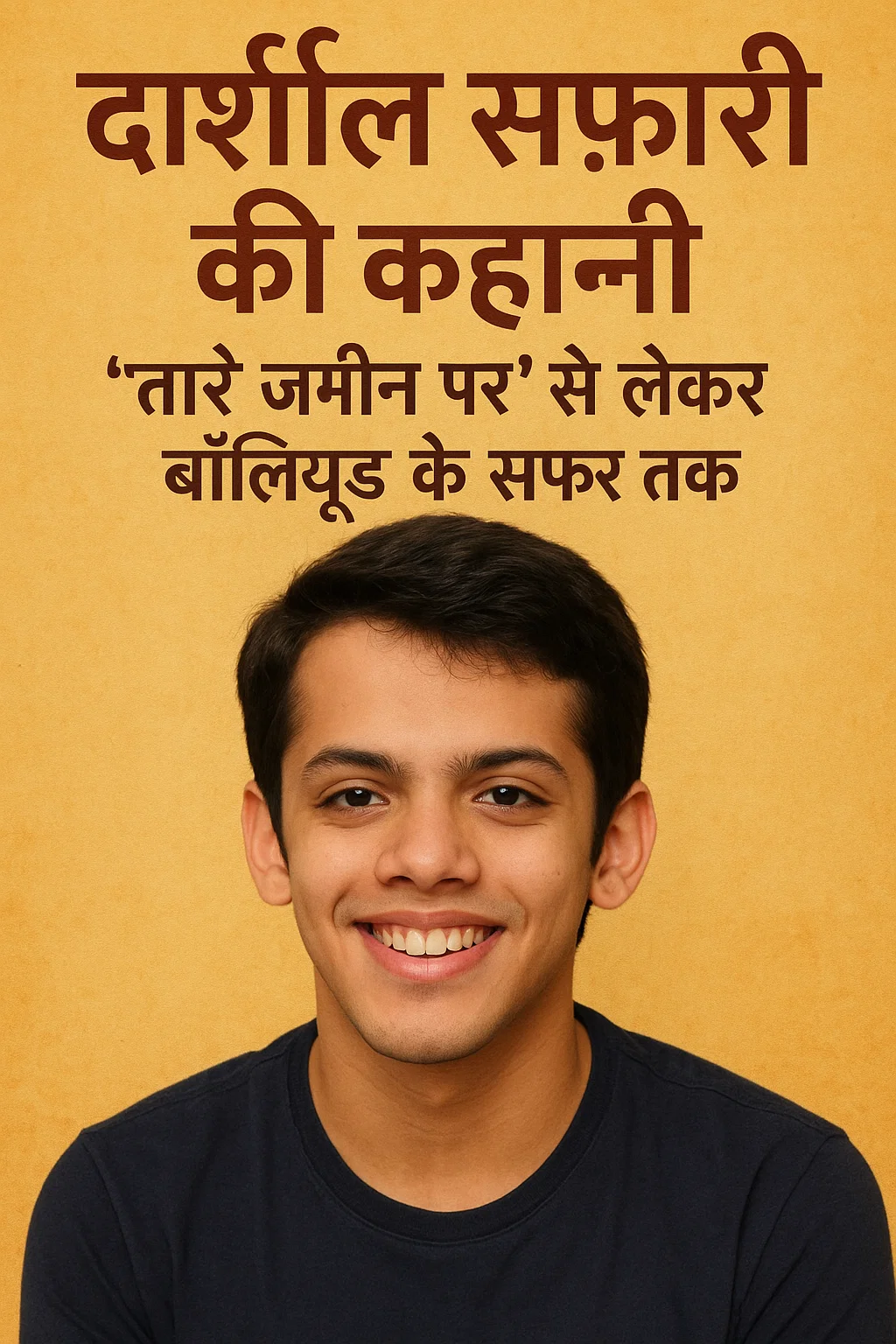The Everlasting Charm of Bollywood: India’s Cinematic Treasure
From vibrant song-and-dance sequences to heartwarming stories of love, drama, and action, Bollywood has etched itself into the hearts of millions, not only in India but across the world. For over a century, this dynamic industry has not just entertained but also inspired, influenced fashion, broken social norms, and redefined storytelling in a way that only Bollywood can.

Let’s take a captivating journey through the lanes of Bollywood — exploring its history, cultural significance, global impact, and what keeps audiences so deeply connected to it.
1. What is Bollywood?
Bollywood is the nickname for India’s Hindi-language film industry, based in Mumbai (formerly Bombay). It’s the largest sector of Indian cinema and one of the biggest film-producing industries in the world. Unlike Hollywood, which mostly sticks to a single genre per movie, Bollywood films often blend multiple genres—romance, comedy, action, tragedy—all in one colorful package.
2. The Golden Era of Bollywood (1950s–1970s)
This era is often called the Golden Age of Bollywood due to its focus on strong storytelling, music, and social messages. Legendary actors like Raj Kapoor, Dilip Kumar, and Dev Anand, and actresses such as Nargis, Madhubala, and Meena Kumari, created iconic cinema that still resonates today.
Films like:
- Mother India (1957),
- Mughal-e-Azam (1960),
- Pakeezah (1972),
are not just movies—they’re cultural landmarks. This era gave importance to poetry in dialogues, meaningful music, and societal reflections.
3. The Rise of the Masala Film (1980s–1990s)
Bollywood in the 80s and 90s saw a shift toward the now-famous “masala” formula—a mixture of romance, action, family drama, and thrilling music. This period gave rise to larger-than-life heroes like:
- Amitabh Bachchan (also called the Shahenshah of Bollywood),
- Dharmendra,
- Jeetendra,
and, later, the iconic Khans—Shah Rukh Khan, Salman Khan, and Aamir Khan.
Some blockbuster hits from this era include:
- Sholay (1975) – the greatest Indian action drama of all time,
- Dilwale Dulhania Le Jayenge (1995) – redefining romance for a generation,
- Hum Aapke Hain Koun..! (1994) – bringing family and tradition to the big screen.
4. Bollywood Music: The Soul of Indian Cinema
Music is not just an addition in Bollywood—it’s often central to the storytelling. Playback singers like Lata Mangeshkar, Kishore Kumar, Mohammed Rafi, and Asha Bhosale made songs that defined generations.
Even today, Bollywood songs are part of weddings, festivals, heartbreaks, and joy. A Bollywood film without songs is almost unimaginable, as they often advance the plot, express emotions, or simply offer an escape.
5. Changing Narratives in Modern Bollywood (2000s–Present)
With globalization and the rise of multiplex culture, Bollywood has evolved. Films today often blend realism with mainstream appeal. While the song-and-dance format is still loved, newer movies explore social issues, mental health, female empowerment, and taboo topics.
Some notable modern movies include:
- Taare Zameen Par (2007) – about dyslexia and childhood creativity,
- Queen (2014) – a woman’s journey of self-discovery,
- Article 15 (2019) – highlighting caste-based discrimination,
- Gully Boy (2019) – a raw look at Mumbai’s underground rap scene.
This transformation has made Bollywood more globally relatable while retaining its emotional core.
6. Global Appeal of Bollywood
Bollywood is no longer limited to Indian audiences. From New York to Nigeria, Dubai to Durban, Indian films have fans around the globe. Countries like Russia, Egypt, and Indonesia have had a long-standing love affair with Bollywood, even before the internet era.
International celebrities like:
- Will Smith,
- Katy Perry, and
- Tyra Banks
have expressed their admiration for Bollywood.
Moreover, platforms like Netflix, Amazon Prime, and Disney+ Hotstar have taken Bollywood films to new global audiences.
7. Bollywood Fashion and Culture Influence
Bollywood has shaped how India dresses and defines beauty. Designers create entire collections inspired by film costumes. From Sridevi’s chiffon sarees in Chandni to Deepika Padukone’s lehenga in Padmaavat, fashion trends are born from the big screen.
Even bridal wear is heavily influenced by Bollywood weddings, both on-screen and off. Think of:
- Anushka Sharma’s real wedding look,
- Alia Bhatt’s minimalist bridal style,
- Ranveer Singh’s flamboyant sherwanis.
8. Criticisms and Challenges
Despite its charm, Bollywood faces its share of criticisms:
- Nepotism and lack of diversity have been debated fiercely.
- The industry’s tendency to rely on remakes and formulaic content sometimes frustrates audiences.
- There’s also growing concern about mental health, workplace pressure, and the undue influence of stardom.
Yet, these conversations have led to change, with a rising demand for fresh talent and authentic content.
9. Women in Bollywood: Breaking Stereotypes
From being limited to “eye-candy” roles to leading films on their shoulders, women in Bollywood have come a long way.
Actors like:
- Vidya Balan (Kahaani),
- Kangana Ranaut (Queen),
- Alia Bhatt (Raazi),
- Shefali Shah (Delhi Crime),
have challenged stereotypes and earned both critical acclaim and box-office success.
The rise of female directors like Zoya Akhtar, Meghna Gulzar, and Gauri Shinde has also added layers to female storytelling in Indian cinema.
10. The OTT Boom and Bollywood’s Digital Transformation
With platforms like Netflix India, Amazon Prime Video, and JioCinema, audiences now prefer content on-demand. Bollywood has embraced this trend by creating web series, direct-to-digital releases, and experimental formats.
Films like:
- Bulbbul,
- Darlings,
- Jaane Jaan,
- Scoop,
have proven that storytelling trumps stardom in the digital era.
11. Bollywood Beyond Entertainment: A Reflection of Society
At its heart, Bollywood is more than just entertainment. It reflects:
- Social changes, like women’s rights, LGBTQ+ representation, and class divides,
- Political climates, subtly or overtly depending on the movie,
- Religious harmony, sometimes promoting unity, sometimes sparking debate.
Movies often act as a mirror of Indian society—amplifying conversations that matter.
12. What Makes Bollywood Timeless?
Despite trends changing, one thing remains: emotions. Bollywood films tug at heartstrings. They create hope, laughter, tears, and dreams. Whether it’s the nostalgia of old black-and-white romance or the electric energy of new-age action thrillers—Bollywood finds a way to connect.
As long as there are stories to tell and songs to sing, Bollywood will remain India’s most beloved storyteller.
Bollywood isn’t just an industry—it’s a cultural phenomenon. It influences art, music, fashion, language, and even the way Indians dream and live. From Awara to RRR, Bollywood has celebrated diversity, resilience, and creativity.












Post Comment